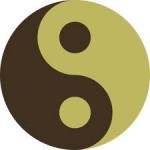Please visit Charles’ web site, www.charlesgilchrist.com., often! He is awesome. We will be using his work in class more and more as we move into 2013 and beyond.
circles (part 4)
We have been exploring concentric circles in nature (see previous three blog posts) and today we will look at them in a form near and dear to all of us, sphincters. According to freedictionary.com, a sphincter is: A ringlike muscle that normally maintains constriction of a body passage or orifice and that relaxes as required by normal physiological functioning.
Wisegeek.com adds: A sphincter is a ring of muscle which holds any kind of biological opening closed. Sphincters are an important part of almost any system in a body. They help to both regulate the exit, entrance and circulation of fluids, gasses, and solids. Sphincters help blood to move through a circulatory system and bile and nutrients to go through the digestive systems. They also assist in the voiding of wastes.
There are as many as 50 different sphincters inside the human body. Some are external, such as the mouth, and others are microscopically internal, such as the ones in capillaries. A sphincter in the eye controls the contracting and widening of the iris when it is exposed to light, and there are sphincters which help control the flow of pancreatic juices.
Some sphincters are under voluntary control, while others are involuntary. These sphincters are differentiated by being controlled by two different types of nerves, the somatic, or voluntary, and the autonomic, or involuntary. An example of an involuntary sphincter is the Ileocecal sphincter. Also known as the Ileocecal valve, it closes off the the small intestine so that food that has not been fully broken down won’t pass into the next stage of digestion. The rectum has both a voluntary and an involuntary sphincter—the first moves wastes through the tract, while the second allows control over bowel movements.
In the digestive track we have a long convoluted tube with both longitudinal muscle fibers and ring-like circular fibers and it is these muscular rings that we will focus on. In healthy peristalsis, the wavelike muscular contractions of the intestine or other tubular structure that propel the contents onward by alternate contraction and relaxation, the rings oscillate between expanding/opening and condensing/closing. Sphincters are like one-way gates that open to allow material to pass through and then close to prevent back-flow.
In a healthy body the rhythm of peristalsis depends upon the demands of the moment. When sympathetic activity like exercise or stress dominates, peristaltic motility decreases, the sphincters contract and secretion of enzymes decreases. When relaxing parasympathetic activity dominates, there is an increase in motility, a relaxing of the sphincters and an increase in secretions.  A healthy organism transitions smoothly back and forth across the whole spectrum of possibilities, widening and narrowing, expanding and condensing. The relationship between skeletal muscle and smooth muscle is alert and respectful, like yin and yang.
A healthy organism transitions smoothly back and forth across the whole spectrum of possibilities, widening and narrowing, expanding and condensing. The relationship between skeletal muscle and smooth muscle is alert and respectful, like yin and yang.
Is it possible, in a yoga posture, to have the inherent motility, the rhythmic oscillation between expanding and condensing of the rings in the digestive track, be the primary source of information and support? What would it feel like if the whole digestive system were in synchrony with posture and movement? In forward bending poses, there is the obvious tendency, if we are not attentive to collapse onto the GI tract and restrict the organs altogether. In backbending poses, if we are not careful and alert, instead of relaxing and opening the GI tract even further to open the pose, the tendency is to go sympathetic, contract the outer spinal muscles, and constrict GI motility. In twits, ride the rings around an a circle, remembering to always have a seed of clockwise balancing counterclockwise movements, and vice versa. Find the peristaltic rhythm. Feel it from mouth to anus and everywhere in between. Find the sphincters. Stay in at least three dimensions. Add tone where needed, relax tone where there is excess. Then let the muscles and bones find flow and harmony within and without.
and yet more circles!
Like tree rings, our spinal discs have annular rings. In healthy discs, these rings are strong, dynamic and allow a circular flow of energy.
The nucleus pulposis, the sphere of gel like substance in the center takes on a spherical shape. When unhealthy, the sphere flatten and the rings can crack open like checking in wood. Because the discs sit right next to
the spinal canal, the gel like substance can leak out into the surrounding spaces and put pressure on the spinal nerves. Herniation describes a weakness in the annular rings and bulging out of the whole disc into the nerve space. A rupture is when the annular rings breaks open and the nucleus pulposis pour into the area of the nerve roots. Keep your spine long through breath, imagination, and healthy connection to gravity. Keep your discs vibrant through intelligent use of hip and sacro-illiac joints. Discovery of the power of the radiant energies to strengthen the discs and sustain lightness through the nucleus pulposis. The original spine, the primitive noto-chord is found in the line through the disc centers. Open it to the light. Keep practicing. Stay awake. Open heart!

